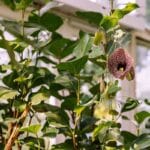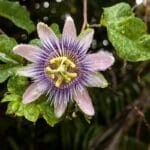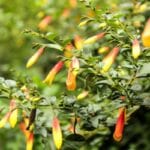In making a relaxing landscape, giving good aesthetics may be lacking for some. Most people appreciate it when most of their senses are activated as they roam around the landscape.
This is why, aside from having beautiful colors and texture, the fragrance plays a huge role in the user’s satisfaction. Given this objective, the Stephanotis plant will fit perfectly.
Botanical Information
With the scientific name Stephanotis floribunda, the Stephanotis is also known as the clustered wax flower, wax flower, Hawaiian wedding flower, bride’s flower, and Madagascar jasmine.
This woody evergreen vine comes from the Apocynaceae family which is a group of species that share common characteristics, such as having waxy leaves arranged oppositely, and same tubular floral morphology, and hairless stems.
Furthermore, the genus Stephanotis is a Greek word meaning a woman’s crown.
Spatial Distribution
The natural habitats to which the Stephanotis vine is often found play a huge role in some of its common names.
This vine is widely distributed among the tropics and subtropics mainly because of its cultural requirements.
Also, it is a native plant from Australia, Madagascar, and Africa, but can be grown in USDA Zones 10 and 11. However, this plant may also be grown in greenhouses in locations outside the zones mentioned.
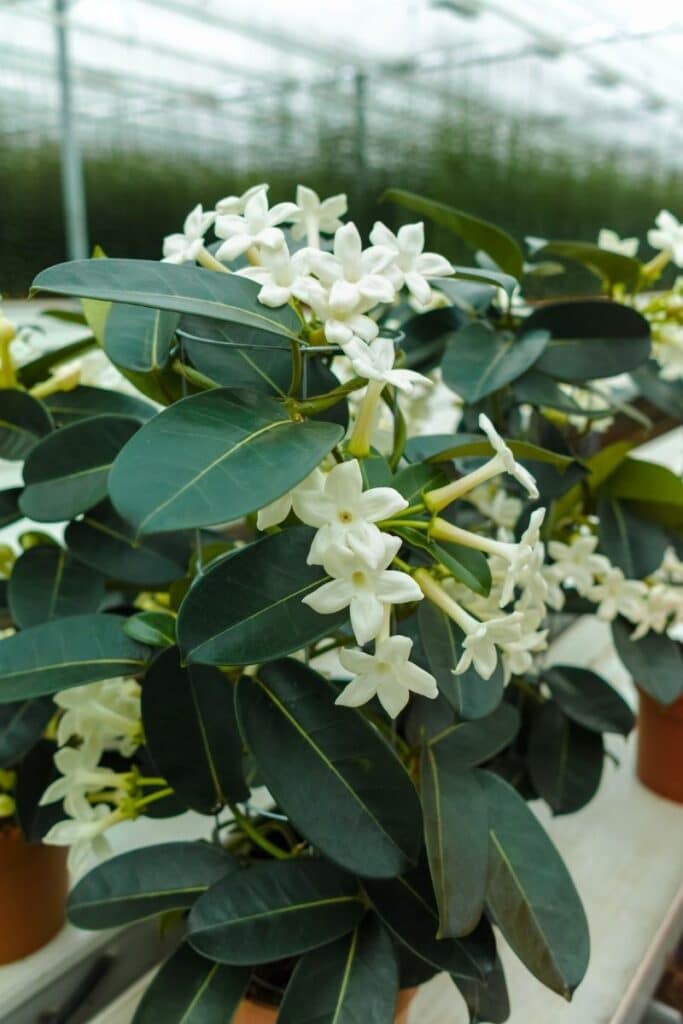
Growth Habits
As a fast-grower, the Stephanotis floribunda has the potential to grow higher than 20 feet as long as supporting structures are present. It has a habit of clinging and crawling onto nearby structures, making it a good vine for vertical landscaping.
Although its growth rate is not considered as aggressive, this vine will require high maintenance, especially when the plant is already established for years. Moreover, this perennial vine bears leaves that are green all year round. On the other hand, the flowers often show during summer, spring, and fall.
Leaves and Stem
The Stephanotis produces oval-shaped leaves that are arranged oppositely. They are also hairless, leathery, shiny, and green. These leaves are attached to a sturdy stem that is versatile and flexible to be trained into different shapes.
Stephanotis Flower
As one of the main attractions, the Madagascar Jasmine showcases clusters of waxy, white, sweet-scented, and tubular flowers. Its bouquet-like appearance along with its fragrance is what makes it a crowd favorite among flowering vines and is often used in wedding bouquets.
When looking at the top of each floret, a star-like shape is seen. The grandiosity of this vine’s flowers is seen in most seasons except winter.
Fruit and Seeds
The moment this evergreen vine hits its reproductive stage, the flowers will give rise to seed-bearing pods that extend for up to 4 inches in length.
There are 65 to 100 flattened winged seeds inside each pod. The wings, sometimes called parachutes, help in the dispersal of the seeds through the wind, making the stephanotis vines available in more areas.
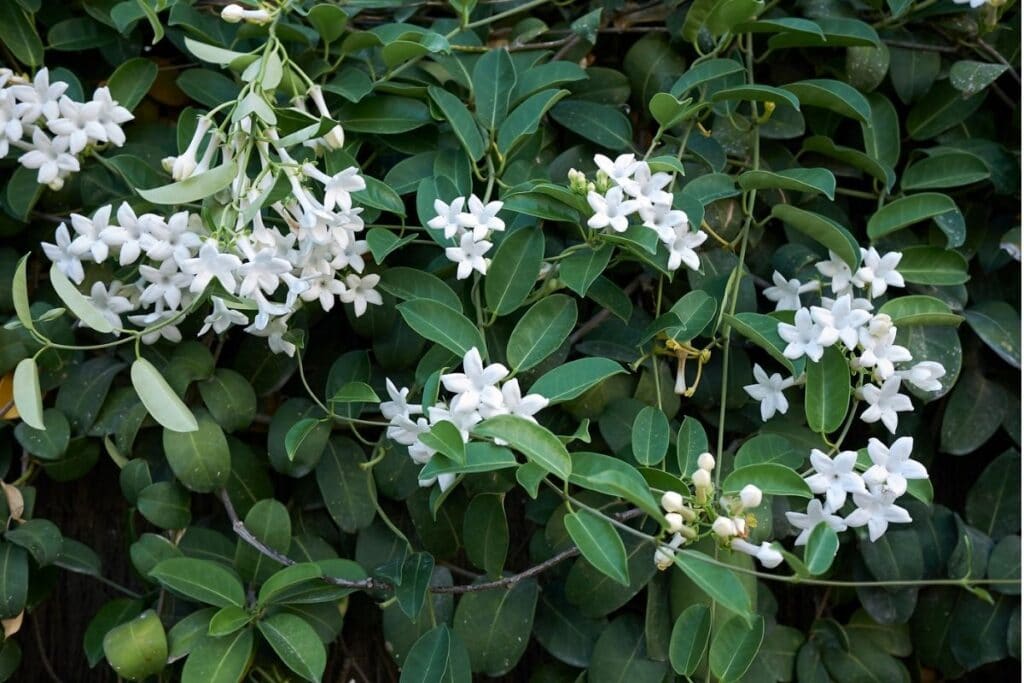
How To Grow Stephanotis and Care Tips
Sun Requirement
The Stephanotis vine loves to be outside and exposed to full sun. Although, partial shade is beneficial during hot summer days. Provide a bright location for this outdoor plant to be under full sunlight for at least 6 hours a day because getting less than that would result in inhibition of flowering and premature death of its leaves.
Water Requirement
Frequent watering is required to keep the soil moist enough to sustain this vine as it undergoes metabolic processes. Adjustments on the watering schedule may be necessary depending on the plant’s status and environmental conditions.
During summer, it is better to water more frequently since water loss is faster. On the other hand, less frequent watering may be done during winter.
Temperature and Humidity
The Stephanotis vine favors warm environments. The optimum temperature for growth is around 18 to 30 degrees celsius.
Soil Requirement
Given that the vine loves a moist and warm environment, planting it on a medium with high organic matter and water holding capacity is best for the plant’s growth. Loamy soils are recommended for the Stephanotis.
Moreover, adding mulch will also help increase the water holding capacity and decrease moisture loss.
Fertilizer Requirement
Slow-release fertilizers are advised but not necessary as long as the soil requirements are met. However, when stephanotis flowers are about to bloom, the application of phosphate fertilizers should be favored and nitrogen fertilizers should be avoided.
Nitrogen fertilizers will only promote the production of more foliage and will inhibit flower formation.
Maintenance Activities
If the goal is to let the stephanotis plants reach heights, providing sturdy wood or metal supporting structures, such as trellises and stakes, should be provided. The stability of these is important as the plant grows. Check for existing and potential problems about it and solve it while the plant is still young.
Moreover, the plant needs regular pruning and removal of dead plant parts. In cutting axillary stems, remember to leave at least half an inch above the remaining node for the buds to have space to develop and grow.
However, avoid pruning when the stephanotis floribunda plant is near the blooming season, especially when the pretty white blossoms are expected. Moreover, some growers prefer to remove the fragrant flowers before the pods develop to avoid the unplanned spread of the vine across the landscape.
During summer hot days, there are instances when mulching will be needed to help preserve moisture.
Applying peat moss or other mulching materials is recommended to be applied for 2 inches thick and 3 to 5 inches away from the main stem of the plant.
The distance between the mulch and the stem is very important because putting it too close will increase the susceptibility of the plant to rot. Remember that the mulching material will vary depending on the state of the plant’s soil.
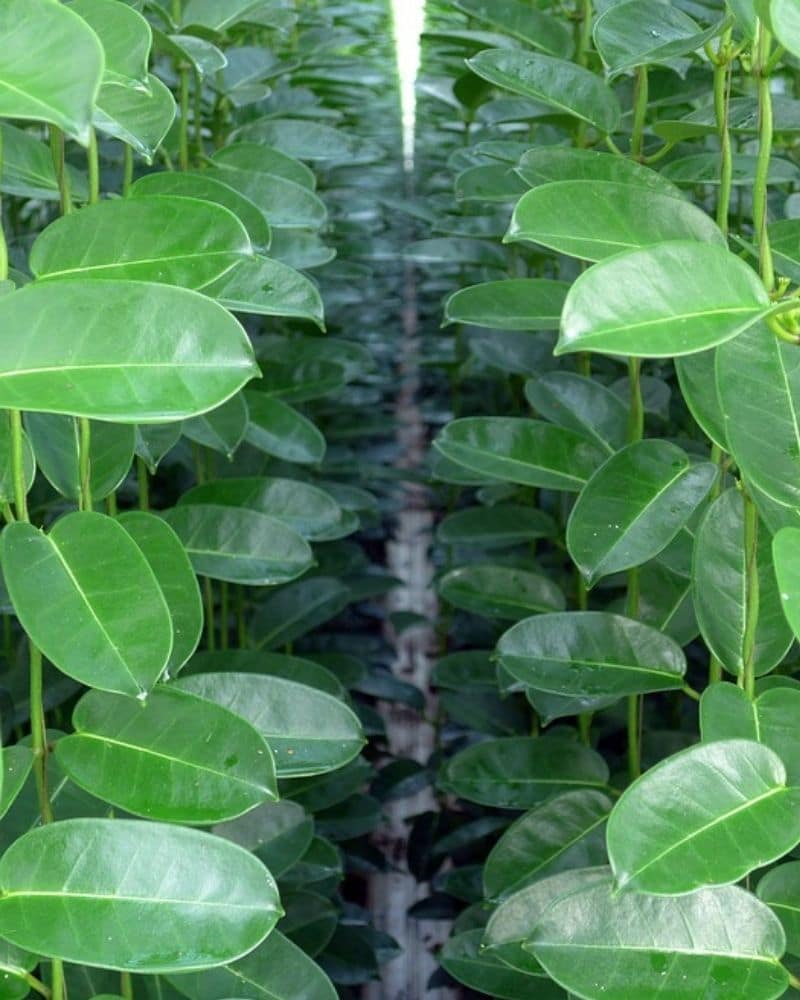
Propagation
Naturally, the Stephanotis vine is often reproduced by wind through its winged seeds. In line with this, harvesting the pods, collecting the seeds, and planting them may also be done manually.
Although, it may take the plant a long time until establishment as compared to stem cuttings.
Another propagation method for the Stephanotis is by planting stem cuttings. Choose the actively growing parts, with the stem sturdy enough to support some leaves. Remove some of the leaves, leaving only 1 to 3 pairs to help the cuttings develop roots.
Dipping the bottom part of the cutting in rooting hormones will help hasten the root development process. Once the seedlings or cuttings develop a good root system, transplanting may be done.
Function In The Landscape
As a versatile vine, the Stephanotis may be trained to crawl onto walls and fences. Some growers plant them in containers and train them to make a basket-like appearance, wherein the plant serves as the handle.
It may also be planted in hanging containers or roofs and let the vine trail down. It can be incorporated into the landscape as an accent, foundation, and screen plant, depending on the preference of the owner.
Moreover, the Stephanotis also serves as an indoor plant for some. They are often placed near windows because the vine will need lots of direct sunlight.
Potential Harm
Exposure to full sunlight after a period of staying under the shade or partial shade will result in leaf burns. The same goes with sudden watering after a period of drought, the vine may undergo shock and result in some morphological changes.
Acclimatization should be performed by slowly exposing the plant to sunlight or gradually applying water. This evergreen plant is sensitive to sudden changes in its environment so, keep in mind to plant it in areas wherein consistent environmental conditions are present.
Furthermore, studies are showing that frequent agitation or moving could impose damage to the plant. Hence, picking the right site to plant is crucial for the Stephanotis’ growth and development.
FAQs
Should stephanotis be inside or outside?
Stephanotis is typically grown outdoors in warm climates but can be kept indoors in cooler regions.
Why are the leaves on my stephanotis plant turning yellow?
Yellow leaves on a Stephanotis plant may indicate overwatering, poor drainage, or insufficient light.
How do you keep stephanotis fresh?
To keep Stephanotis fresh, provide bright indirect light, well-draining soil, and water when the top inch of soil is dry.
Final thoughts
In summary, Lorchid cactus is a low-maintenance plant that can thrive in bright, indirect light. It is important to keep the plant in well-draining, moist soil and water it only when the soil is dry to the touch. During the growing season, the plant can be fertilized once a month. If you’re looking for more houseplants to add to your collection, consider Stephanotis floribunda care, which is another beautiful and fragrant plant that can be grown indoors.
References
*image by simonapavan&foto-pixel.web.de/depositphotos




